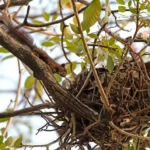Acorn squash, with its sweet and nutty flavor, is a beloved addition to fall and winter meals, gracing tables with its hearty presence. Whether roasted, stuffed, or pureed into soups, the delectable taste of acorn squash is a culinary delight. To truly relish this autumn gem, it’s essential to understand the art of timing in harvesting. In this guide, we’ll delve into the intricacies of when acorn squash is ready to be picked. From the early stages of growth to the subtle signs of maturity, discovering the perfect moment to harvest ensures you enjoy this squash at its peak. Let’s explore the journey of acorn squash from the garden to your plate.
Acorn Squash Growth
To know when acorn squash is ready for harvest, it’s crucial to comprehend its growth stages. From the moment the seed germinates to the development of lush vines and the emergence of blossoms, each phase contributes to the ultimate maturity of the squash. We’ll explore the timeframes involved in planting, flowering, and the maturation of acorn squash, laying the foundation for understanding the optimal time for harvest.
Signs of Maturity in Acorn Squash
As acorn squash matures, distinct signs begin to emerge, indicating its readiness for harvest. These visual cues serve as a guide for growers and enthusiasts alike. From the size and color of the squash to the texture of its skin, we’ll unravel the indicators that point towards a fully mature acorn squash. Understanding these signs empowers gardeners to make informed decisions, ensuring that each squash picked is bursting with flavor and culinary potential. Let’s dive into the nuanced details that signal the moment of perfection for acorn squash.
Checking the Stem
One of the key indicators of acorn squash readiness lies in a close examination of its stem. When the squash is mature, the stem connecting it to the vine undergoes changes. A dried, withered stem is a strong indication that the squash is ready to be harvested. This transformation signals that the squash has detached itself from the vine, diverting its energy towards ripening. Conversely, if the stem is still green and pliable, it suggests that the squash is not yet fully mature. By paying attention to the stem’s condition, gardeners can ensure they pick acorn squash at the precise moment when it has reached its peak flavor and texture.
Tapping for Ripeness
Tapping acorn squash is an age-old method to determine its ripeness, relying on the resonance of sound. A mature squash produces a hollow, deep sound when tapped, indicating that the flesh has solidified and the interior cavity has developed. This distinct sound is a reliable sign that the squash is ready for harvest. On the contrary, an immature squash tends to emit a dull thud when tapped, suggesting that the interior is still developing. By employing this auditory cue, gardeners can confidently confirm the readiness of their acorn squash, ensuring a satisfying culinary experience.
Examining the Skin
The skin of acorn squash provides valuable insights into its maturity. As the squash approaches readiness, its skin undergoes changes in color and texture. Mature acorn squash typically exhibits a deep, rich color—often a dark green or orange, depending on the variety. The skin should also feel tough and resistant to scratches, signaling a well-developed rind. Any lingering traces of green or a soft, easily scratched skin may indicate that the squash needs more time on the vine. By carefully examining the skin, growers can make informed decisions about when to harvest, guaranteeing acorn squash that is both visually appealing and at the peak of its flavor.
Timing the Harvest
Timing is crucial when it comes to harvesting acorn squash for the best flavor and texture. The culmination of the various signs of maturity – a dried stem, a hollow sound when tapped, and the right color and texture of the skin – provides a comprehensive understanding of the ideal moment for harvest. Typically, acorn squash is ready to be picked around 80 to 100 days after planting, but this can vary based on factors like weather conditions and specific varieties. Regular monitoring and a keen eye for these indicators will help ensure you gather your acorn squash at the peak of its ripeness, guaranteeing a delicious addition to your culinary endeavors.
Tools for Harvesting
Equipped with the knowledge of when to harvest acorn squash, the next step is using the right tools for the job. Pruning shears or a sharp knife are essential for cleanly cutting the squash from the vine. Ensure the tools are clean and sharp to avoid damaging the plant or leaving behind jagged edges on the squash. When harvesting, leave a small section of the stem attached to the squash, providing a natural handle. This approach prevents damage to the squash and reduces the risk of decay during storage. With the right tools and techniques, the harvest process becomes efficient and preserves the quality of the acorn squash.
Storing Harvested Acorn Squash
Proper storage is vital to maintain the freshness and flavor of harvested acorn squash. Store the squash in a cool, dry place with good ventilation, such as a pantry or cellar. Avoid stacking the squash, as good air circulation helps prevent mold and decay. Ideally, store them at temperatures around 50 to 60°F (10 to 15°C). Check the squash regularly for any signs of decay, and use those showing the earliest signs first. Stored correctly, acorn squash can last for several weeks, allowing you to enjoy the fruits of your harvest well into the fall and winter months.
Conclusion
Harvesting acorn squash at the perfect moment is an art that involves a combination of observations and careful timing. By understanding the signs of maturity, utilizing the right tools for harvesting, and adopting proper storage practices, you ensure that each acorn squash reaches your plate at its flavorful best. As you embark on your acorn squash harvesting journey, relish the anticipation of transforming these humble squashes into a myriad of culinary delights. From savory roasted dishes to sweet desserts, the bounty of your harvest promises a season of delicious and wholesome meals.



